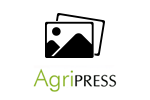|
|
| 22 jan 2016 |
10:26 |

|
Modest growth in the EU compound feed production in 2015 vs 2014 (+0.2%)
The compound feed production in the EU-28[1] in 2015 reached an estimated level of 156.1 mio. t, i.e. 0.2% more than in 2014, according to data provided by FEFAC members.
|
|
Feed costs remained low and even decreased compared to 2014, due to a good 2015 cereals harvest in the EU, both in terms of quantity and sanitary status, and a largely sufficient supply of oilseed meals globally, especially soybean meal. This compensated the still decreasing pigmeat quotations to a certain extent, at a time when pigmeat production continued to increase by close to 1%[2] in 2015. At the end of the day, in spite of the economic incentive to pig farmers to use their own cereals, industrial pig feed production remained stable in 2015.
As regards cattle feed, the picture is as usual very contrasted across Europe, depending on weather conditions for forages production. The effect of the quota regime, with a +1%[2] milk delivery expected in 2015/16 vs 2014/15, was hardly visible for the compound feed industry EU-wide, with an overall 1% decrease in industrial cattle feed.
Finally, poultry feed production continued to increase by almost 2% in 2015, boosted by an increasing per capita consumption of meat (+2%[2]), which benefited primarily to poultry meat (+2.5%). As a consequence, poultry feed consolidated its position of leading segment of EU compound feed production, now well ahead of pig feed.
Like in 2014, Poland has been among the largest producing countries the best performing, with annual growth of +4%, boosted by the demand for poultry feed which has turned Poland into the largest poultry producing country in the EU. In parallel, Germany, France, Spain, Italy, UK and The Netherlands saw their total compound feed production change between -0.5 and + 1%. Germany strengthened its position as leading EU country in terms of total compound feed production, before Spain and France.
The final estimate and detailed breakdown of the 2015 figures will be issued in June 2016.
Market Outlook for 2016
FEFAC market experts are relatively pessimistic concerning industrial compound feed production in 2016. Although they foresee the upward trend on poultry feed demand to persist, although at a lower pace than in 2015 (+1%), a significant reduction in pig feed demand (-2/-3%) can be expected, in line with expert forecasts on pigmeat production in the EU. So far, the weather conditions have been very favourable to forages in Northern Europe with relatively warm temperatures, which should weigh on the demand on cattle feed (-1% expected again in 2016). Overall, this would lead to a 0.5% decrease in compound feed production in 2016 vs 2015.
A number of parameters may affect this picture of course. For example, the impact of El Niño in the Southern hemisphere, that may impact on the evolution of the global dairy market, the risk of rain deficit in South Europe, the disease outbreak threats (Avian influenza, Bluetongue, African Swine fever). The ongoing negotiations with Russia on sanitary aspects, if concluded positively, could reactivate exports of certain pig products to Russia and alleviate the pressure on the pigmeat market.
Feed quotations have been on the downward trend since 2013 and the good global 2015 grain and oilseed harvest is expected to maintain this trend in the beginning of 2016. However, prudence is required, with uncertain impact of the drought in Northeastern Brazil on 2016 soya harvest.

|
|
|
|
